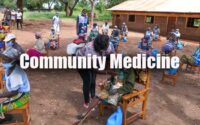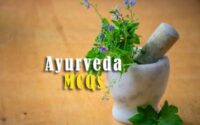Shalya Tantra Questions and Answers
Shalya Tantra Questions and Answers are available for Ayurveda students and teachers. Applicants can download Shalya Tantra Old Question Papers pdf. Also, get the Study material, Preparation tips in addition to the Shalya Tantra.

On our page, we provide Shalya Tantra Previous Papers for the sake of aspirants. Therefore, download the Shalya Tantra Previous Papers and start your preparation. Also, check the Shalya Tantra Syllabus and Exam Pattern from the below sections.
Questions and Answers on Shalya Tantra
1. Which of the following is not included while describing about ‘Shalya Tantra’ in ‘Sushruta Samhita’ chapter one of ‘Sutra Sthana?’
(1) Yantra
(2) Shastra
(3) Kshara
(4) Jalouka
2. Which of the following instrument (yantra) is considered capable of removing foreign body (Shalya) from any part of body like — ‘Sandhi, Dhamani?
(1) Singhamukha
(2) Kankamukha
(3) Hasta
(4) Brhimukha
3. Which sterilization method in suitable to disinfect the linen?
(1) Autoclaving
(2) Cidex
(3) Radiation
(4) Boiling
4. “Triad of General anesthesia’ are –
(1) Amnesia, Analgesia, Muscle Contraction
(2) Amnesia, Analgesia, Muscle relaxation
(3) Neuralgia, Neuropraxia, Muscle relaxation
(4) Analgesia, Neuralgia, Neuropraxia
5. Which of the following is ‘muscle relaxant’?
(1) Atracurium
(2) Lignocaine
(3) Bupivacaine
(4) Morphine
6. According to Acharya Dalhana, which of the following is not considered in ‘Pashchata Karma’?
(1) Bala
(2) Varna
(3) Agnikarma
(4) Langhana
7. According to Acharya Dalhana, ‘Alpamukha’ shastra use is described in –
(1) Chedana
(2) Bhedana
(3) Lekhana
(4) Vedhana
8. ‘Aaharana Karma’ is not indicated in which disease?
(1) Sharkara
(2) Ashmari
(3) Mudhagarbha
(4) Vidradhi
9. According to Acharya Sushruta, which one in advocated for ‘Samyaka Karmabhyasa?
(1) Yogya
(2) Svadhyaya
(3) Shastra
(4) Sambhasha
10. Which of the marma is not among the Sadyopranahara Marma?
(1) Hridya
(2) Nabhi
(3) Utkshep
(4) Bast
11. According to Sushruta Samhita, ‘Kshara is pradhanatama in shastra — anushastra’ in context to this statement which option is correct?
(1) Due to chedana, aishana, vishesha kriya avacharana
(2) Due to chedana, bhedana, Iekhana, tridoshaghna
(3) Due to shalya nirharana, anushastra, bahi parimarjana
(4) Due to chedana, visravana, lekhana
12. ‘Paneeya Kshara’ is ‘Ahitakara’ (not suitable) in which disease?
(1) Gara visha
(2) Gulma
(3) Raktapitta
(4) Sharkara
13. According to Acharya Dalhana, colour of the flowers of ‘asitamushkaka’ advocated by Sushruta is-
(1) Shweta
(2) Krishna
(3) Pandu
(4) Goura
14. “Dahana upakarana’ for agnikarma which are advice to be used on skin by Sushruta are –
(1) Pippali, danta, shara shalaka
(2) Jambavoshtha, tamra — rajata louha
(3) Kshoudra, gud, Sneha
(4) Agnikarma is contraindicated in skin
15. In which of the following, ‘picchila anna’ is not given to patient before agnikarma?
(1) Mudhagarbha
(2) Granthi
(3) If there is ‘kathina supta mamsa’ in “vrana’
(4) Shleepada
16. According to Acharya Sushnuta, which one is indicated for ‘shonita avasechana’ in ‘Nripa, aadhya, balaka, sthavir, bheeru, naree, sukumara’?
(1) Prachchana
(2) Shringa
(3) Alabu
(4) Jalouka
17. Which of the following option is correct according to Acharya Bhaluki in context to shringa?
(1) Length — 12 angula; Base — hole like mng finger; Tip — hole like masha
(2) Length — 7 angula; Base — hole like thumb base; Tip — hole like mudga
(3) Length — 5 angula; Base — hole like middle finger: Tip — hole like kalaya
(4) Length — 18 angula; Base — hole like great toe; Tip — hole like thumb base
18. Acharya Sushruta has not mentioned ‘Gophana bandha’ for which of the following’?
(1) Chibuka
(2) Nasa
(3) Murdha
(4) Aushtha
19. According to Acharya Sushruta, which one is wrong in context to ‘Vikeshika and aushadha?
(1) There is ‘kleda’ if ‘ati snigdha’
(2) There is ‘chedana’ if ‘ati ruksha’
(3) There is ‘gharshana’ of ‘vranamukha’ if ‘vishama’
(4) There is ‘vrana rohana’ if ‘vishama’
20. How many types of ‘Shalya Gati Vishesha’ are there –
(1) 3
(2) 4
(3) 5
(4) 6
| Kayachikitsa | Shalakya Tantra |
| Dravyaguna Vigyan | Panchakarma |
| Rachana Sharir | Shalya Tantra |
| Prasuti Tantra | Rog Nidan |
| Kriya Sharir | Agad Tantra |
21. ‘Asthipurnta, asthi nistoda, sangarsha’ these symptoms are of …………….. Shalya.
(1) Asthigata
(2) Asthivivargata
(3) Sandhigata
(4) Murmagata
22. Which one is a colloidal solution?
(1) Hartmann’s
(2) Haemaccel
(3) Normal saline (0.9% NaCl)
(4) Dextrose saline
23. Which of the following method is not used in a patient for enteral nutrition?
(1) Gastrostomy
(2) Ryle’s tube feeding
(3) Jejunostomy
(4) Colostomy
24. Which of the following method is not described by Acharya Sushruta for control of haemorrhage?
(1) Bandhana
(2) Sandhana
(3) Skandana
(4) Pachana
25. According to Acharya Dalhana, first and last measure to stop haemorrhage are ____________ and ………………. respectively.
(1) Sandhana, Skandana
(2) Skandana, Pachana
(3) Sheeta upachara, Dahana
(4) Kashaya, Pachana
26. Which of the following statement is not correct in the context of antibiotic prophylaxis in surgical practice?
(1) Not required in clean surgery
(2) Repeated only during long operation
(3) Not required at the induction of anaesthesia
(4) Patients with heart valve disease require antibiotic prophylaxis
27. Which of the following is not an opioid analgesic?
(1) Morphine
(2) Diclofenac potassium
(3) Tramadol
(4) Codeine
28. Which of the statement is not correct in the context of ultrasound?
(1) No radiation
(2) Inexpensive
(3) Not good for cysts & foreign bodies
(4) First line investigation for hepatic, biliary and renal disease
29. Which statement is not correct in context to computed tomography?
(1) High radiation dose
(2) Not a choice for the detection of pulmonary masses
(3) Excellent for liver, pancreas, renal and bowel pathology
(4) Rapid acquisition of images in one breath hold
30. In which chapter of Sushruta Samhita principle of ‘Shat kriyakala’ is describe?
(1) Aampakvaishneeya adhyaya
(2) Doshadhatu malakshaya — vridhhi vigyaneeya adhyaya
(3) Krityaakrityavidhi adhyaya
(4) Vranaprashna adhyaya
31. Development of ‘Vrana’ in ‘Shopha’ after ‘avadeernana’ is found in which kriyakala according to Dalhana commentary?
(1) Third
(2) Fourth
(3) Fifth
(4) Sixth
32. ‘Expulsion of dosha’ is indicated in which of the following stage?
(1) Sanchaya
(2) Prakopa
(3) Prasara
(4) Sthana Sanshraya
33. ‘Mandoshmata at site of disease, tvaka Savarnata, sheeta shophata, sthirta, mandavedana and alpa shopha’ these features are found in which of the following?
(1) Poorvarupa of vranashopha
(2) Aama avastha of vranashopha
(3) Pachyamana avastha of vranashopha
(4) Pakva avastha of vranashopha
34. ‘Various type of ‘varna’, e.g. — krishna, aruna, shweta etc., having various type of pain and various type of discharge’ which type of vidradhi has these features?
(1) Pittaja
(2) Raktaja
(3) Kshataja
(4) Sannipataja
35. What is the treatment of ‘aama granthi’ indicated in Sushruta Samhita?
(1) Shopha chikitsa
(2) Visarpa chikitsa
(3) Shleepada chikitsa
(4) Shastra karma
36. “High cardiac output’ is found in which type of shock?
(1) Hypovolemic shock
(2) Cardiogenic shock
(3) Distributive shock
(4) Obstructive shock
37. Which one is ‘Vikrata vrana akriti’ according to Dalhana commentary?
(1) Ayata
(2) Chatushkona
(3) Deergha
(4) Ardhachandra
38. Which are the features of ‘Shuddha vrana’ according to Sushruta Samhita?
(1) Shyavoshtha, pidakisama, avedana
(2) Shyavoshtha, kledavarjita, sthira
(3) Pidakisama, kapotavarnapratima, ashuna
(4) Pidakisama, tvaka savarna, samtala
39. According to Sushruta Samhita, in which of the following ‘sheeta’ and ‘ushna’ kriya is indicated?
(1) Samyak Dagdha
(2) Dur Dagdha
(3) Plushta Dagdha
(4) Ati Dagdha
40. Which one is not a ‘Kshudra roga’ according to Sushruta Samhita?
(1) Nirudhaprakasha
(2) Sannirudhaguda
(3) Gudabhransha
(4) Nadivrana
41. Which disease affects ‘hanusandhi’ according to Sushruta Samhita?
(1) Panasika
(2) Pashanagardabha
(3) Enivellika
(4) Kaksha
42. In secondary hyperparathyroidism which of the following is/are essential components for surgical intervention?
(A) Persistently high serum level intact PTH > 500 pg/ml
(B) Estimated volume of the largest gland > 300 — 500 mm3?
(1) Only ‘A’
(2) Only ‘B’
(3) Both ‘A’ and ‘B’
(4) Both are non — essential
43. Which of the following statements is/are correct about varicose veins?
(A) Varicose veins are one of the most common conditions causing impairment in quality of life.
(B) CT —- guided endovenous ablation has minimal procedural morbidity ” and is highly cost effective.
(1) Only ‘A’ is correct
(2) Only ‘B’ is correct
(3) Both ‘A’ and ‘B’ are correct
(4) Both are incorrect
44. A 22 year old male involved in a motorcycle accident, presents with a fractured femur and following fixation is noted to have become disoriented with several areas of petechial haemorrhage. He has suffered from which of the following condition?
(1) Air embolism
(2) Fat embolism
(3) Mycotic embolism
(4) Acute aortic thrombosis
45. Which of the following is not a cause of Gangrene?
(1) Berger’s disease
(2) Intra-arterial drug injection
(3) Frostbite
(4) Varicose veins
46. ‘Medial epicondylitis’ is synonym of which of the following disease?
(1) Golfer’s elbow
(2) Tennis elbow
(3) Frozen shoulder
(4) Perthes discase
47. While operating a HIV patient, which of the following is/are recommended?
(A) Use of full face mask
(B) Avoid operating HIV patient
(C) Use double gloves at operation
(1) (A) and (B)
(2) (B) and (C)
(3) (A) and (C)
(4) All
48. For the preparation of Kusha (Splint) Acharya Sushruta has advocated which of the following?
(A) Madhu, Udumbara, Ashwatha
(B) Palasha, Kakubha, Vansha
(C) Arka, Snuhi, Sarja
(1) Only(A)
(2) Only (B)
(3) (A) and (B)
(4) (B) and (C)
49. Which of the following is a disadvantage of casting and splinting?
(1) No interference with fracture site
(2) Poor mechanical stability
(3) No wound
(4) No implants to remove
50. Infection of bones is known as…………………
(1) Osteoarthritis
(2) Osteoarthrosis
(3) Osteomyelitis
(4) Osteophytes
51. According to Glasgow Coma Scale (GCS) which of the following option indicates moderate head injury?
(1) GCS 15 with no loss of consciousness
(2) GCS 14 or 15 with loss of consciousness
(3) GCS 9-13
(4) GCS 3-8
52. Jefferson’s fracture is found in which of the following?
(1) C1
(2) C5
(3) T1
(4) L1
53. According to Sushruta Samhita, causes and number of stana roga are similar to which of the following?
(1) Gulma
(2) Vidradhi
(3) Gati (Nadi)
(4) Granthi
54. Which of the following is not a clinical ” indicator of potential bleeding in Torso Trauma?
(1) Increasing respiratory rate
(2) Decreasing pulse rate
(3) Falling blood pressure
(4) Rising serum lactate
55. In case of oesophageal perforation, which of the following will be treated non surgically?
(1) Perforation confined to mediastinum
(2) Pleura breached
(3) Bocrhaave’s syndrome
(4) Perforation of abdominal oesophagus
56. What is another name of ‘Paracsophagcal hiatus hemia’?
(1) Rolling hernia
(2) Sliding hernia
(3) Spigelian hernia
(4) Richter’s hernia
57. ‘There is suppuration (Paka) in vidradhi but no suppuration in gulma’. Which one is correct in this context?
(A) ‘Gulma’ has ‘Nibandha’
(B) ‘Vidradhi has no ‘Nibandha’
(C) Vidradhi is due to mamsa and shonita
(1) Only statement (A) is correct
(2) Only statement (B) is correct
(3) Only statement (C) is correct
(4) All the statements are wrong
58. Which is incorrect in the context of “nerves responsible for abdominal pain”?
(1) Parietal peritoneum is supplied by autonomic nerves
(2) Abdominal wall is supplied by somatic nerves
(3) Abdominal organs are supplied by autonomic nerves
(4) Visceral peritoneum is supplied by autonomic nerves
59. Which statements is/are correct?
(A) Small bowel colic comes in waves and disappears completely when peristalsis ceases.
(B) Pain of ureteric colic is intense lasting one to two minutes.
(1) Only (A)
(2) Only (B)
(3) Both (A) and (B) are correct
(4) Both (A) and (B) are incorrect
60. In which of the following enlargement is found in ‘Vama Parshva’?
(1) Plihodara
(2) Yakridadal yudara
(3) Baddhagudodara
(4) Parisravyudara
61. Which of the following condition is associated with ascites having protein > 25 gm/L?
(1) Nephrotic syndrome
(2) CCF – Congestive Cardiac Failure
(3) Cirrhosis
(4) Pancreatic ascites
62. Which of the following statement/s is/are correct?
(A) Peptic Ulceration is common in first part of duodenum.
(B) Peptic ulcer is common on greater curvature of stomach.
(1) Only statement (A) is correct
(2) Only statement (B) is correct
(3) Both statements are correct
(4) Both statements are incorrect
63. Which option is incorrect regarding ‘Billroth II’ operation?
(1) 2/3 of stomach is removed
(2) Duodenal stump is closed
(3) Stomach is anastomosed to the jejunum
(4) Stomach is anastomosed to colon
64. Which of the following statements about small intestine are correct?
(A) Comprises jejunum and ileum
(B) Has valvulae conniventes
(C) Blood supply from superior mesenteric artery
(1) (A) and (B) are correct
(2) (B) and (C) are correct
(3) (C) and (A) are correct
(4) All are correct
65. Which of following is most common position of appendix?
(1) Retrocaecal
(2) Pelvic
(3) Paracecal
(4) Pre-ileal
66. According to Sushruta Samhita, which of — the following statements is/are correct in context to Arsha Chikitsa?
(A) Treat arsha situated in bahya guda vali
(B) Do not treat arsha siwated in madhya guda vali
(C) Treat antarvali situated arsha after telling these as difficult to treat
(1) Only statement (A) is correct
(2) Only statement (B) is correct
(3) Only statement (C) is correct
(4) Statement (A) and (C) are correct
67. Full thickness rectal prolapse can be treated with which of the following procedure?
(1) Delorme’s procedure
(2) Altemeier’s procedure
(3) Both (1) and (2)
(4) Lord’s procedure
68. In Sushruta Samhita use of ‘Pipeclika’ (black ants) for seevana is advocated in which of the following?
(1) Karna sandhana
(2) Nasa sandhana
(3) Tvak sandhana
(4) Bhinna antra sandhan
69. Which of the following are features of ‘Yakrita Vidradhi’ as per Sushruta Samhita?
(1) Teerva Kati — prishthagraha
(2) Hikka, Aatopa
(3) Shvasa, Trishna
(4) Parshva Sankocha, Shvasa avarodha



